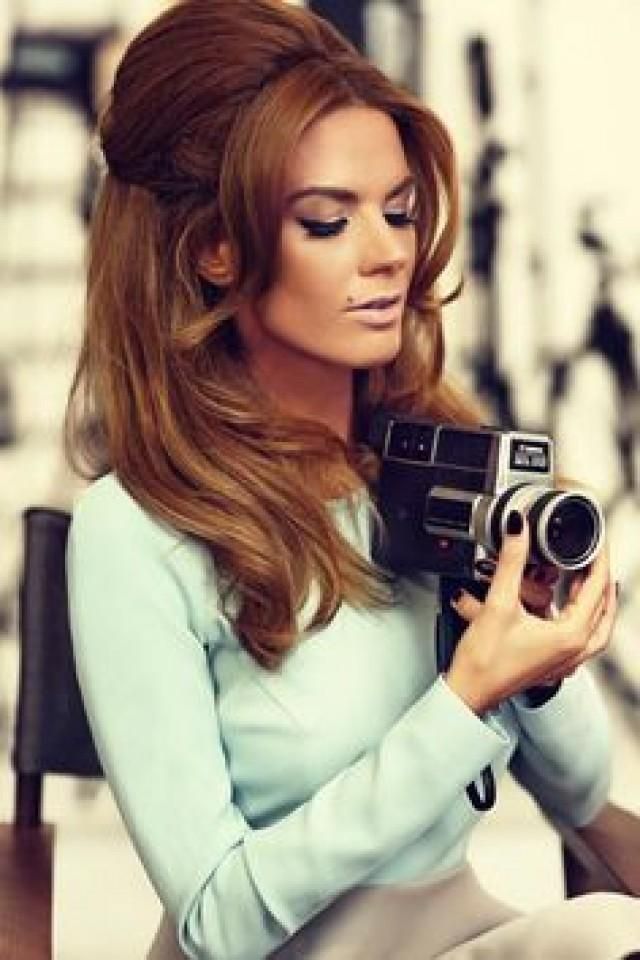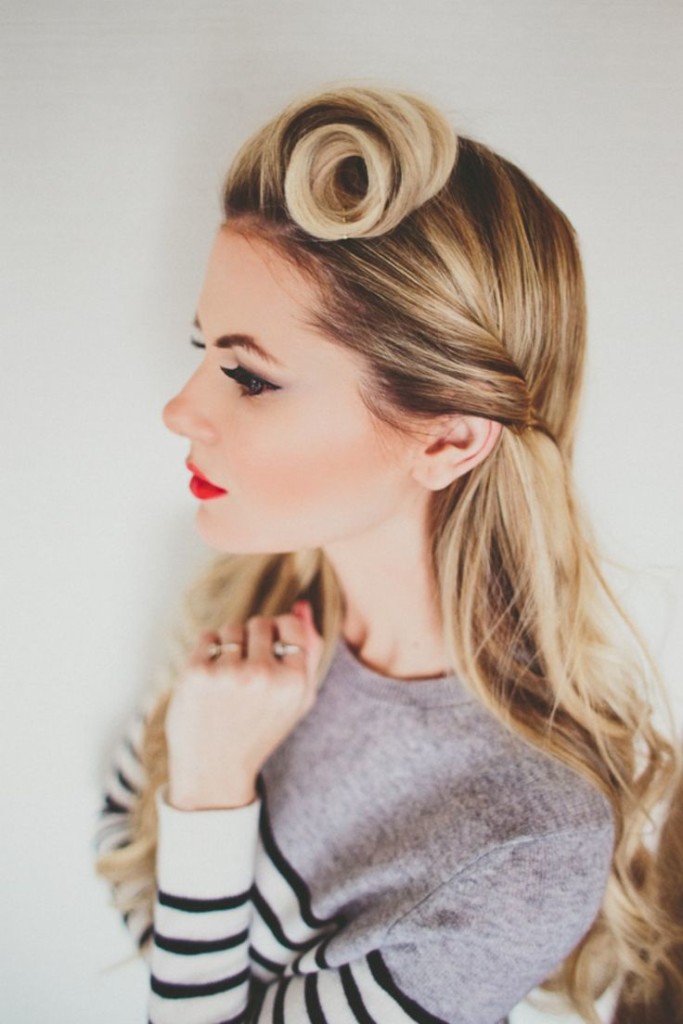Table Of Content

Characterized by its ends curled upward, the Flip hairstyle became a symbol of youthful rebellion. To achieve this vintage hairstyle, you’ll need to curl the ends of your hair outwards, giving it a flippy, playful bounce that resonates with the free-spirited vibe of the decade. A close relative to the Beehive, the Bouffant features hair lifted high on the head and is designed to create a rounded, puffed-out shape that adds shine and drama to your look.
Cultural and Fashion Influences
Rita Ora takes mob wife aesthetic to the 60s with this bouffant hair - Yahoo Finance Australia
Rita Ora takes mob wife aesthetic to the 60s with this bouffant hair.
Posted: Tue, 30 Jan 2024 08:00:00 GMT [source]
Some great advice, invest in a texture and volumizing spray, such as IGK’s No Limit, to really maximize the height in your crown area. Curtain bangs are great for women who want a new style without having to fully commit to a fringe. They are very versatile and can be worn side-swept or down the middle. To style 60s-inspired hairstyles like this, use a round brush blowout with Dallas thickening spray by R+Co to add texture.

Classic Women’s 1960s Hairstyles
The ’60s marked the rise of the afro, a bold and empowering hairstyle that celebrated natural texture and cultural identity. The afro exudes confidence and self-assuredness, featuring coiffed lengths that radiate outward with vibrant energy. This style has evolved over the years but remains a symbol of empowerment and individuality. Hair switches / hair pieces – Either a inch long hair switch you can arrange yourself or a pre-styled hair bun / bun curls/ ringlet bun you can slip into place.
Sports figures
Psychedelic drugs, especially LSD, were widely used medicinally, spiritually and recreationally throughout the late 1960s, and were popularized by Timothy Leary with his slogan "Turn on, tune in, drop out". Ken Kesey and the Merry Pranksters also played a part in the role of "turning heads on". Psychedelic influenced the music, artwork and films of the decade, and a number of prominent musicians died of drug overdoses (see 27 Club). There was a growing interest in Eastern religions and philosophy, and many attempts were made to found communes, which varied from supporting free love to religious puritanism. Feminists took to the streets, marching and protesting, authoring books and debating to change social and political views that limited women. In 1963, with Betty Friedan's book, The Feminine Mystique, the role of women in society, and in public and private life was questioned.
Kaia Gerber's Teased Hair Is '60s-Inspired & Impossibly Sultry - The Zoe Report
Kaia Gerber's Teased Hair Is '60s-Inspired & Impossibly Sultry.
Posted: Wed, 15 Nov 2023 08:00:00 GMT [source]
An enduring icon of the 1950s and ‘60s, movie star Audrey Hepburn embraced the progression of sixties fashion up to the hippie aesthetic of the last part of the decade. Having firmly established herself as a leading lady in 1950s films like Roman Holiday, Sabrina, and Funny Face, Hepburn’s influence continued into the sixties. Both the “Mod” movement, to which Quant contributed, and the hippie movement were part of a new model of “street style” in which fashion is disseminated from the streets up to the designers rather than vice versa. Jane Mulvagh writes in Icons of Fashion, “1962 to 1968 were crucial years in which the allure and originality of street style challenged, and finally broke, the hegemony of high fashion” (86). The trajectory of fashion in the 1960s saw three very diverse overarching styles but also a shift from a designer-centric fashion ecosystem to one where the consumer was at the center of creation.
Best of all, all you need is a curling iron and a bit of hairspray to bring this look to life. Simply curl the ends of your hair inward, holding each piece of hair on the barrel for a few seconds. Once all of your ends are curled, mist hairspray over your mane, and you’re all set.
So, it would be wise if you contacted a hairdresser with the required expertise. One of the societal norms broken during the 1960s was when Black women stopped straightening their hair to conform to what society deemed to be acceptable. The Black women let their hair grow and with that embraced the Afros. They wore Afros like symbolic crowns to their identity and political stance.
The Loose Beehive
Portobello Road in London or junk shops were good places to scout for an old tortoiseshell mantilla. There were lots of sewing patterns available to make large bows at home. Consequently, they could come in all sorts of colours and materials. Hair was worn long throughout the 1960s but came more into vogue in the mid/late-1960s for both sexes. Here, the hair was set in large rollers to create the lift and height required, as well as allow the ends of the hair to be flicked up. For this style, the hair was cut in layers of petal-shaped points, each one being about two or three inches longs.
TRESemmé Day 2 Fresh & Clean Foaming Dry Shampoo
The hair was teased into the classic round Afro hairstyle with a wide-toothed Afro pick. Raymond Bessone trained Vidal Sassoon and is believed to have influenced the modern bouffant. Have fun with your look as you let front tendrils of your face hang loose. You can also enhance this look by adding a headband for a chic and modern update. To do so, first, wiggle the nozzle all around your hair, then when the hair is just barely damp, start sectioning it off. Finish the blowdrying process by taking hair around a round brush and tugging it outward and downward in a non-continuous motion, focusing the airflow downwards as well.
Use a small clip or a bobby pin to hold your hair together as you pin your hair underneath. Use some hairspray like the Dove Style+Care Strength & Shine Flexible Hold Hairspray. If your hands have any leftover product, lightly run your fingers through your curls to further soften and separate them. Otherwise, simply finger-comb hair to impart some last-minute definition.
The mop-top haircut, characterized by its rounded shape and fringe, became an iconic look in the 60s, especially due to its association with The Beatles. This style exuded a sense of youthfulness and was a departure from the more conservative hairstyles of previous generations. It worked best with naturally straight hair and typically required a bit of teasing at the roots for that extra volume you might be aiming for. In the 1960s, men’s hairstyles were a dynamic form of self-expression, ranging from clean-cut sophistication to free-spirited rebellion. Let’s explore how styles like the mop-top, side-parted hair, and hippie-inspired locks reflected the social changes of the decade. And if you’re game for spicing up your strands, adding a few curls into the mix is a great place to start.
Straight, seemingly air-dried strands were an effortless fashion statement, like actress Akiko Wakabayashi rocks her in her turn as Bond girl Aki in You Only Live Twice. Nowadays, with long hair being such a staple, it's super simple to recreate this look. "This timeless style isn’t going anywhere soon. One of the most referred to hairstyles, this half up-half down style paired with a sexy fringe or face framing angles is super easy to do," Westby says. Aretha Franklin's flipped bob further inspired women everywhere to opt for a semi-short style—only she urged them to add an accessory to the mix. This is particularly great for present-day inspiration, considering, as we all know by now, headbands are back and bigger than ever.
By 1966, the movement was beginning to grow in size and power as women's group spread across the country and Friedan, along with other feminists, founded the National Organization for Women. First popularised in the 1950s, bouffant hairstyles continued to dominate throughout the ’60s, varying in height and volume. Characterised by it’s backcombed hair-raising style, bouffant styles were (and still are!) the perfect party look for a night out on the town. Dubbed the new pixie, this hairstyle became one of the most iconic looks of the decade with Rosemary’s Baby actress Mia Farrow being the poster girl for the short style.
Hair became a symbolic representation of social change as women opted for shorter cuts and men grew out their hair to lengths previously considered unacceptable. Step back in time to the swinging ’60s, a decade that revolutionized fashion and beauty with its innovative and bold hairstyles. The 1960s were an era where hairstyles were as significant as the clothes you wore, becoming powerful expressions of individuality and social change. From the voluminous beehive to free-flowing locks, the decade was all about making a statement with your hair. You might find it exciting to recreate these vintage 60s hairstyles that exude charm and character, even today. Here we take a look at women’s 1960s hairstyles, along with popular accessories.
No comments:
Post a Comment